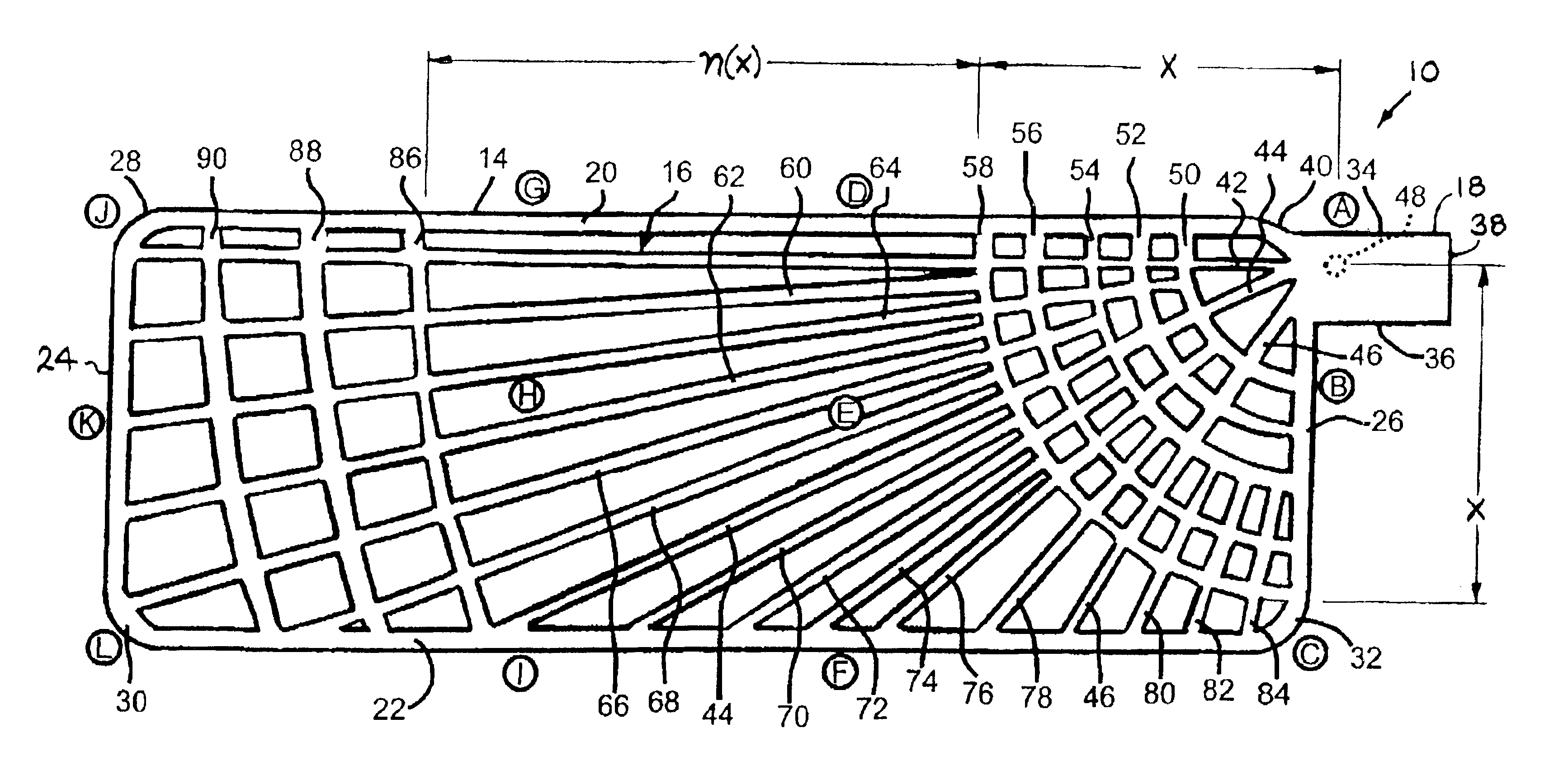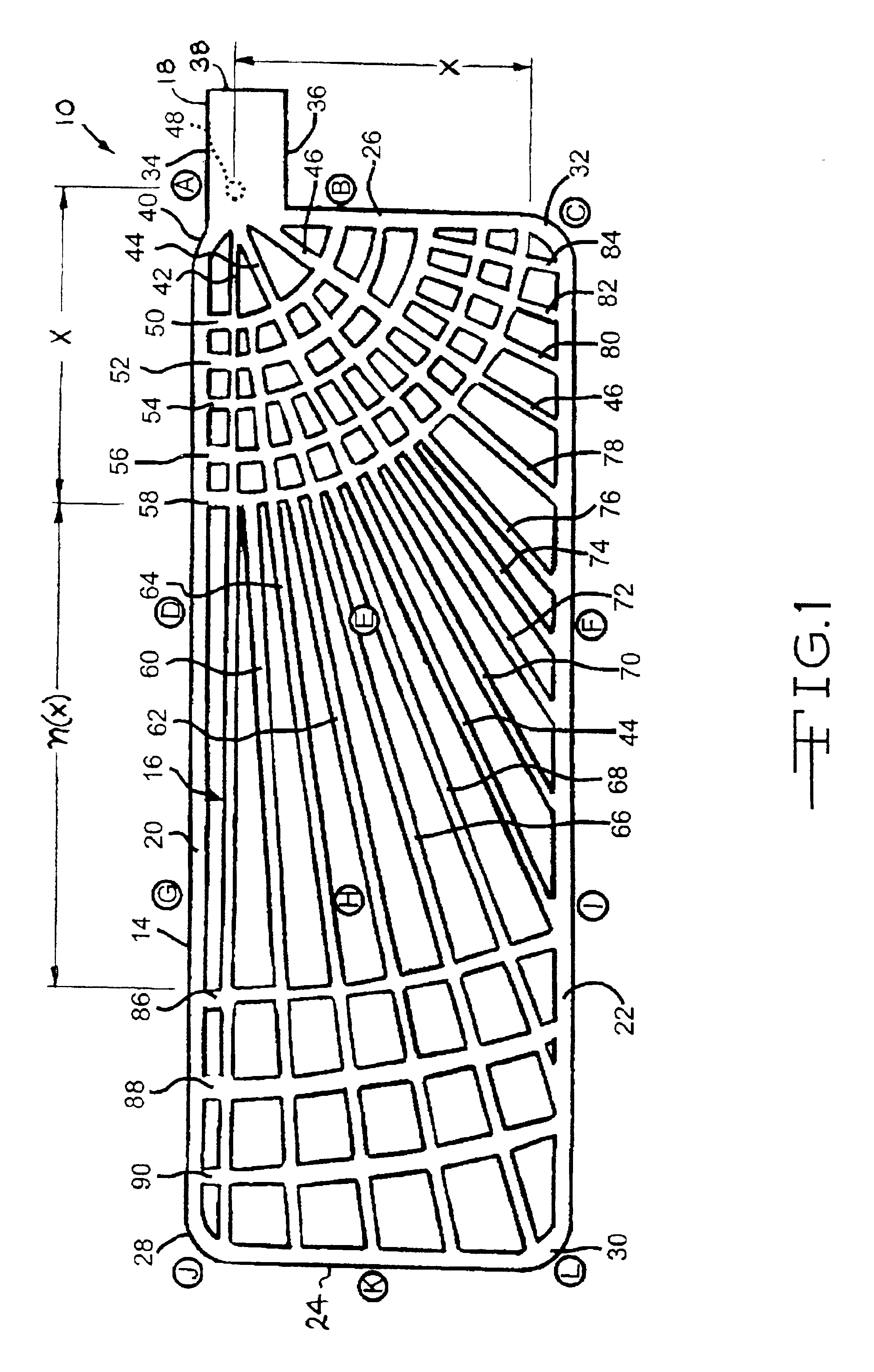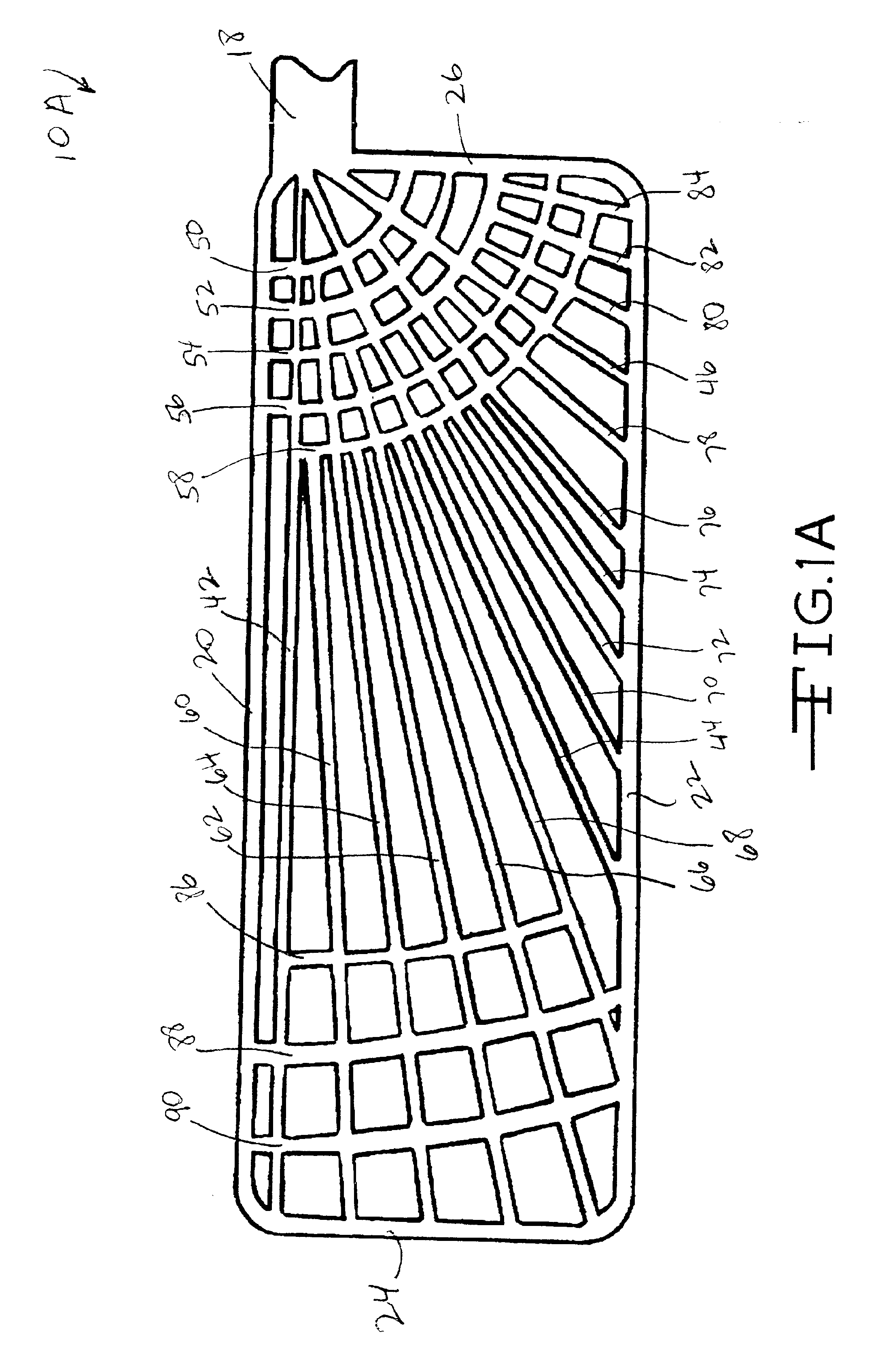Current collector having non-symmetric grid pattern converging at a common focal point
a current collector and grid pattern technology, applied in the field of chemical energy conversion to electrical energy, can solve the problems of reducing the internal resistance of the current collector, and achieve the effects of reducing the flow path of electrons, reducing the rdc, and reducing the number of cells
- Summary
- Abstract
- Description
- Claims
- Application Information
AI Technical Summary
Benefits of technology
Problems solved by technology
Method used
Image
Examples
Embodiment Construction
[0016]Referring now to the drawings, FIG. 1 shows an enlarged view of one embodiment of a current collector 10 according to the present invention while FIG. 2 shows another embodiment of the present current collector 12 having a double wing configuration. FIG. 3 is of an exemplary electrochemical cell 100 of a multi-plate configuration comprising one of the present current collectors. Whether the current collector of the cell 100 is of the single wing configuration 10 or of the double wing type 12 is not necessarily important.
[0017]As shown in the enlarged view of FIG. 1, the current collector 10 generally comprises wire or bar-shaped conductor strands in the shape of a frame 14 surrounding a grid 16 and supporting a tab 18. The conductors and tab are of a conductive material such as nickel, aluminum, copper, stainless steel, tantalum, cobalt and titanium, and alloys thereof. As shown in this figure, the frame 14 has spaced apart upper and lower strands 20 and 22 extending to and me...
PUM
| Property | Measurement | Unit |
|---|---|---|
| current | aaaaa | aaaaa |
| perimeter | aaaaa | aaaaa |
| distance | aaaaa | aaaaa |
Abstract
Description
Claims
Application Information
 Login to View More
Login to View More - R&D
- Intellectual Property
- Life Sciences
- Materials
- Tech Scout
- Unparalleled Data Quality
- Higher Quality Content
- 60% Fewer Hallucinations
Browse by: Latest US Patents, China's latest patents, Technical Efficacy Thesaurus, Application Domain, Technology Topic, Popular Technical Reports.
© 2025 PatSnap. All rights reserved.Legal|Privacy policy|Modern Slavery Act Transparency Statement|Sitemap|About US| Contact US: help@patsnap.com



